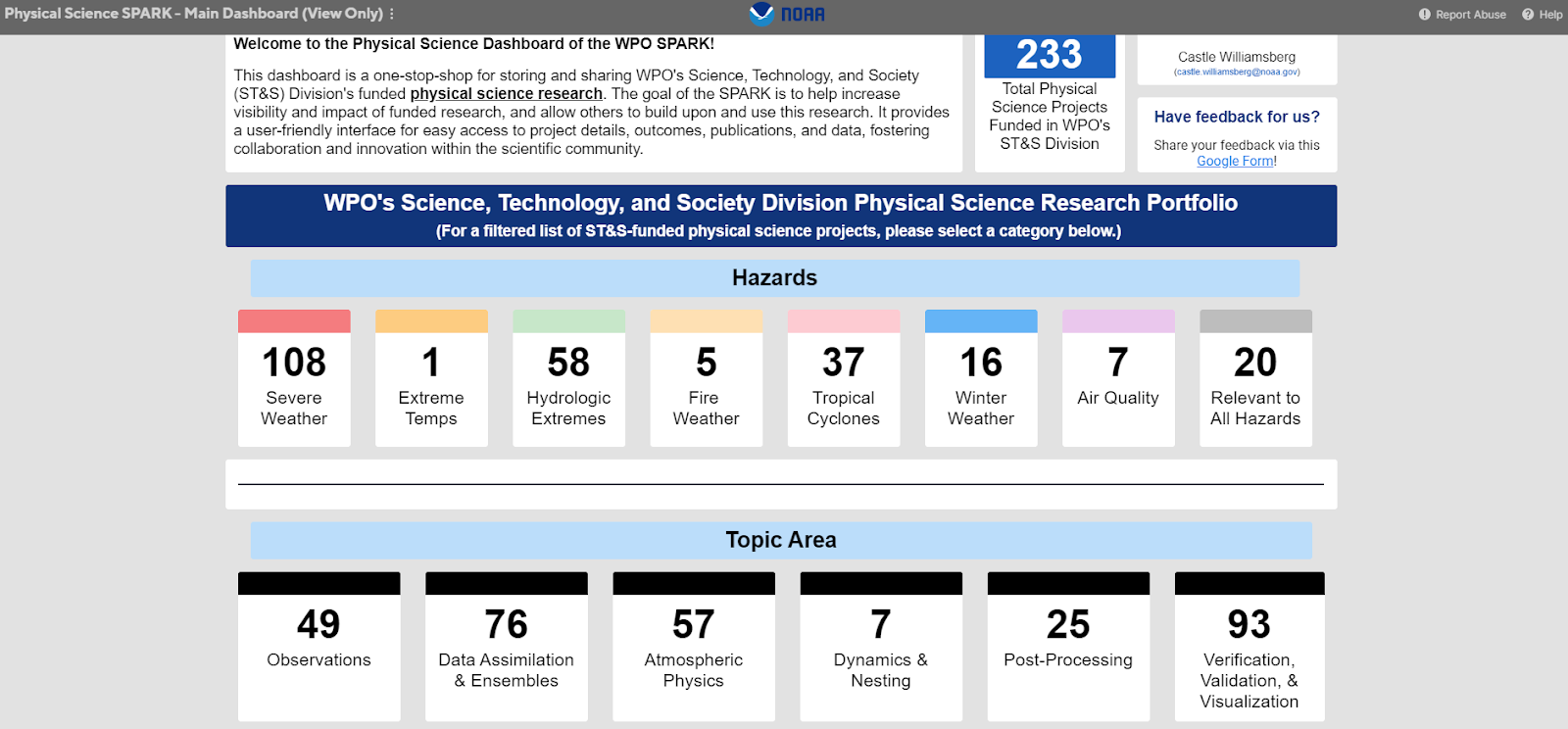The Weather Program Office’s (WPO) Science, Technology, and Society (ST&S) Division recently launched the newest version of its System for Public Access to Research Knowledge (SPARK) web tool.
The SPARK utilizes a robust dashboard that allows users to filter more than 300 ST&S-funded projects by hazard or topic area and find publications pertaining to each active or completed project. The latest version now incorporates the physical science research portfolio, expanding beyond the previous version’s focus on social science only.

The SPARK aligns with NOAA’s commitment to embracing open science, offering open and equitable access to research findings. Making a breadth of science research readily available is an integral part of improving forecasts as information needs and platforms evolve.
“Expanding transparency of our research and development portfolio not only helps advance open science, it also creates more opportunities for project findings to find use in weather research and practice,” says Gina Eosco, Division Chief of WPO’s ST&S Division. “Nothing excites me more than to hear an operational meteorologist or an emergency manager say they read a recent finding from the SPARK, and they are trying to implement the findings. That’s what this is about—making sure our research makes a difference in the community.”
The inspiration behind the SPARK was driven by the goal to enhance the visibility and accessibility of WPO’s research portfolio, associated publications, and research results. This ensures that practitioners within the weather, water, and climate community, as well as the public, can readily access, use, and benefit from them.
“WPO intends to expand and enhance the SPARK in the future, including projects funded by the Earth System Research and Modeling Division and the Observations and Research Support Division,” says John Ten Hoeve, WPO Acting Director. Adding these will make the full range of the office’s funded research easier for those across the Weather Enterprise to find and use.





